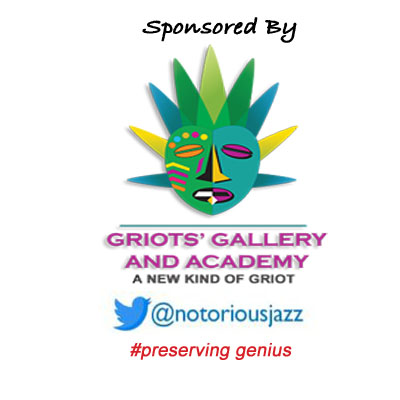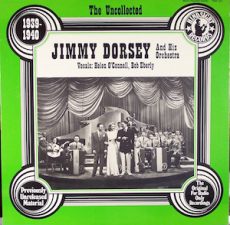
Daily Dose Of Jazz…
Sonny Lee was born Thomas Ball Lee on August 26, 1904 in Huntsville, Texas. While a student at Texas State Teachers’ College in the early 1920s he played with Peck Kelley, then moved to St. Louis, Missouri where he worked with the Scranton Sirens, Frankie Trumbauer, Gene Rodemich, Vincent Lopez, and Paul Specht.
By 1932 he had joined the Isham Jones Orchestra, remaining with Jones until 1936. Concomitantly he played with Benny Goodman in 1934-35. After this stint he went to work with Artie Shaw, Charlie Barnet, Woody Herman, and Bunny Berigan. In 1938 he joined the Jimmy Dorsey Orchestra, where he played until 1946.
Trombonist Sonny Lee, who is credited on nearly 200 recording sessions between 1925 and 1946, transitioned on May 17, 1975 in Amarillo, Texas.
More Posts: history,instrumental,jazz,music,trombone
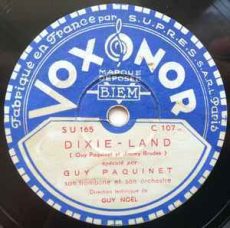
Daily Dose Of Jazz…
Guy Patrick Paquinet was born in Tours, France on August 13, 1903, Tours, France. He played in an army band in the early 1920s, then worked with Paul Gason, Lud Gluskin, Fred Mélé, and Don Parker.
Guy led his own ensemble from 1934 to 1936, then worked as a sideman for Alix Combelle, Django Reinhardt, and Ray Ventura. In the 1940s he returned to bandleading, leading his own ensembles through the 1950s and working with, among others, Sidney Bechet, Dizzy Gillespie, and Tony Proteau.
Trombonist Guy Paquinet, whose son André became a noteworthy trombonist, transitioned on January 5, 1981 in Selle-sur-le-Bied.
More Posts: bandleader,history,instrumental,jazz,music,trombone
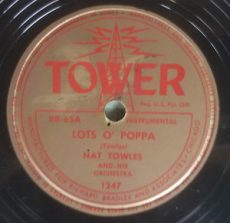
Daily Dose Of Jazz…
Nat Towles was born August 10, 1905 in New Orleans, Louisiana, the son of string bassist Phil “Charlie” Towles. He started his musical career as a guitarist and violinist at the age of eleven but switched to the bass at 13. Performing in his hometown through his teenage years with Gus Metcalf’s Melody Jazz Band, he eventually played with a number of bands, including Buddie Petit, Henry “Red” Allen, Jack Carey, and the Original Tuxedo Jazz Orchestra.
In 1923 he formed The Nat Towles’ Creole Harmony Kings. This jazz band became one of the prominent territory bands in Texas, Oklahoma, Kansas, and Nebraska. By 1925 he was playing bass for Fate Marable, and reformed his own band the next year. 1934 saw Towles organizing a band of young musicians studying music at Wiley College in Austin, Texas. He also worked the club circuit in Dallas, Texas during this period, when T-Bone Walker and Buddy Tate worked for him.
In the 1930s he transformed his band into The Nat Towles Dance Orchestra, signed with the National Orchestra Service, and focused on swing music through the 1930s and 1940s. In 1934 Towles took up residence in North Omaha, Nebraska, where his band was stationed for the next 25 years. With this outfit Towles dueled with Lloyd Hunter for dominance over the much-contested Near North Side in North Omaha, where he was held over at the Dreamland Ballroom for several weeks. In 1936 and 1937 Towles’ band held residence at Omaha’s Krug Park.
Over the course of his career Billy Mitchell, Buster Cooper, Red Holloway, Buster Bennett, Preston Love, Paul Quinichette, Neal Hefti, Jimmy Heath, Duke Groner, Buddy McLewis and Oliver Nelson were members of his band at one time or another. He continued leading bands throughout the 1950s until retiring to California in 1959 where he opened a bar.
Never finding true national recognition and fearing the limelight would then steal away his best players, there are very few recordings of Nat Towles’ Band. Bassist, big band leader and educator Nat Towles, whose band is considered one of the greatest territory bands of all time by musicians who played in it and by others who heard it, transitioned in Berkeley, California of a heart attack in January 1963.
More Posts: bandleader,bass,educator,history,instrumental,jazz,music

Daily Dose Of Jazz…
Lemuel Charles Johnson was born August 6, 1909 in Oklahoma City, Oklahoma. He played clarinet in local ensembles in the 1920s, however, he picked up saxophone in 1928, playing with Walter Page’s Blue Devils.
Early in the 1930s he played in the band of Grant Moore from 1931 to 1935 in the Milwaukee, Wisconsin area. Then he went to work with Eli Rice and Earl Hines. By 1937 he was moving to New York City where he played with Fess Williams, Luis Russell and Louis Jordan, before joining Skeets Tolbert’s band in 1939. In Tolbert’s group Johnson sang in addition to playing saxophone.
Lem recorded with Buster Harding, Eddie Durham, Edgar Hayes, Sidney Bechet, Claude Hopkins, St. Louis Jimmy, Sam “The Man” Taylor and Sammy Price. He also recorded with Johnny Long and his Orchestra on Coral Records. He cut several sessions as a leader, which have subsequently been released on compact disc.
After the 1940s he went into semi-retirement and occasionally played into the Sixties. Tenor and soprano saxophonist Lem Johnson transitioned in New York City on April 1, 1989.
More Posts: history,instrumental,jazz,music,saxophone
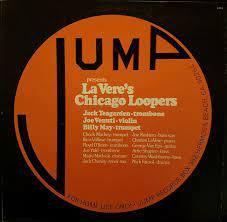
Daily Dose Of Jazz…
Charlie LaVere was born Charles LaVere Johnson on July 18, 1910 in Salina, Kansas to a Union Pacific Railroad blacksmith and where he first acquired an interest in music. His first musical instrument was a cornet, then later acquired an upright baritone horn, on which he learned to play many popular songs of the day. Studying piano in the 4th grade was the turning point in his decision to make it his instrument of choice.
At age twelve, after attending a Willard Robison and his Deep River Orchestra he gained an interest in jazz. He studied piano throughout high school and performed in various recitals and assemblies. At the age of eighteen he visited Oklahoma City, Oklahoma where he was introduced to Jack Teagarden, his brother Charlie Teagarden and where he studied Music at the University of Oklahoma at Norman. He performed with Frank William’s Oklahomans on campus and in local venues. He would go on to tour in 1929 during the Wall Street Crash, with brief stints in various bands including Louis Armstrong.
Relocating to Chicago, Illinois in 1932 he shared an apartment with the Teagarden’s and their spouses. He began playing regularly with Joe and Marty Marsala, Floyd Towne, Jim Barnes, Ray Biondi, Shorty Cherock, Larry Russel, Clark Galehouse, Carl Bean and Wingy Manone. He would perform his first recorded sessions supporting Wingy Manone and Teagarden in addition to leading his own bands.
After touring Texas and the mid-west with Eddie Neibauer and Dell Coon in 1934, he returned to local Chicago venues, working regularly with Joe Marsala. He assembled a multiracial group of musicians, befriended writer and jazz critic Helen Oakley, and recorded for Brunswick Records and Columbia Records. LaVere then found steady work in radio, performing on the Fibber McGee and Molly show for NBC. He also sang and arranged songs for a vocal group. Charlie briefly relocated to Fort Worth, Texas to perform in Paul Whiteman’s group and later touring throughout Texas, Oklahoma, and Kansas, before heading West.
He worked as a recording artist for Decca Records at their studios on Melrose Avenue with The Andrew Sisters, Victor Young, John Scott Trotter, and Gordon Jenkins, and under his own name.
In 1944 he formed the LaVere’s Chicago Loopers featuring Billy May, Artie Shapiro, Floyd O’Brien, Joe Venuti, Matty Matlock, Nick Fatool, and George Van Eps. He would go on to perform for Walt Disney, Gordon Jenkins, George Burns, Bobby Darin, Bob Crosby and Wingy Manone.
As rock music became more popular his work became more sporadic and in 1964 LaVere accepted a position as assistant conductor at the Melodyland Theater. He performed piano and accordion on cruise ships, arranged and performed with Russ Morgan in Las Vegas, Nevada and continued to work with Gordon Jenkins, performing on Harry Nilsson’s album of jazz standards. From the 1960s onward he ran his own piano repair shop in the San Diego, California area, in addition to performing solo residencies at resorts in California, Oregon, and Colorado.
Pianist, vocalist, bandleader, and composer Charlie LaVere transitioned on April 28, 1983 in Ramona, California.
More Posts: bandleader,composer,history,instrumental,jazz,music,piano,vocal



